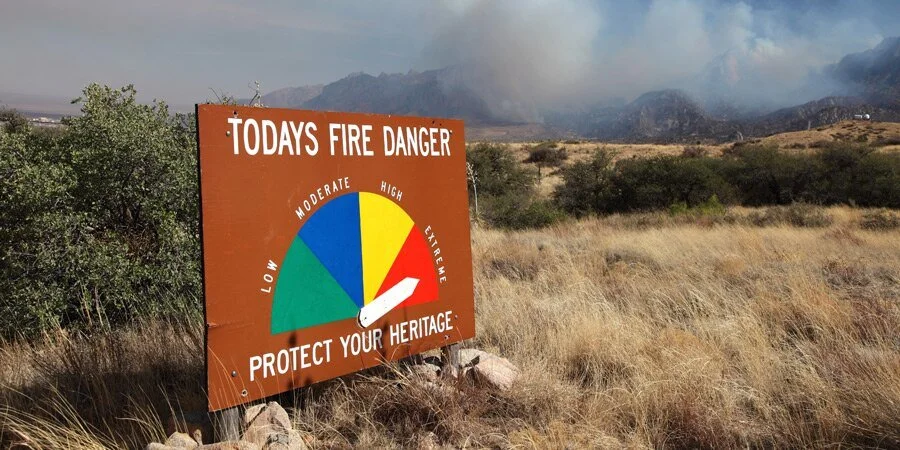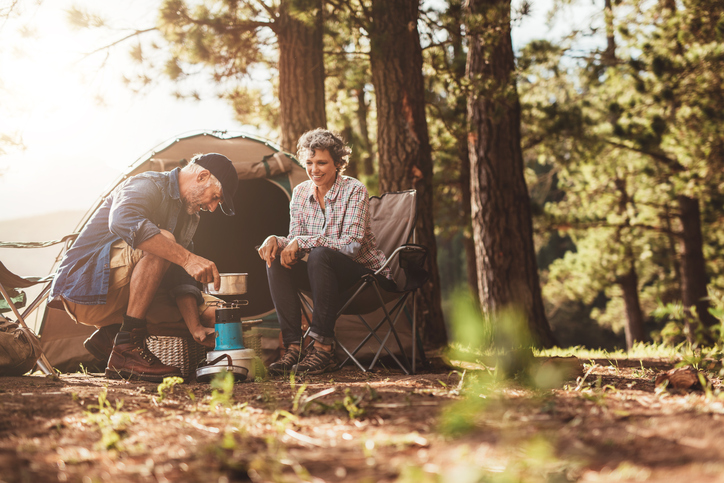Wildfire Safety Tips for Camping & Outdoor Recreation in Ruidoso
Protect Ruidoso’s natural beauty by practicing wildfire safety while camping and exploring. Learn essential fire prevention tips before you go, from safe campfire practices to trail precautions. Stay informed, follow local guidelines, and enjoy a safe, responsible outdoor adventure in Ruidoso.
95% of wildfires are caused by people—and can be prevented by people, too. Do your part to keep Ruidoso safe by keeping these tips in mind before you leave home as well as on the trail to make for an enjoyable outdoor experience in Ruidoso.
Do your part. Prevent forest fires.
FIRE SAFETY UPDATES
Village of Ruidoso Moves to Level II Fire Restrictions Starting Monday, March 10, 2025
The Village of Ruidoso will move to Level II fire restrictions on March 10, 2025, to reduce wildfire risk during severe drought. Certain outdoor activities and equipment use will be limited or prohibited to protect public safety. Residents and visitors should familiarize themselves with the full guidelines and exercise caution until conditions improve.
ABOUT WILDFIRES
In 2024, wildfires burned 8,924,884 acres in the United States, which is more than a threefold increase from the previous year. This was also above the five and 10-year averages. Pay attention to your surroundings with wildfire in mind. For some tips on how to prevent wildfires and what to do if you're caught in the middle of one, visit our Wildfire Information guide.
BURN BANS IN EFFECT?
Before you head out camping or backpacking, check fire danger levels and make sure there are no burn bans in effect.
Check to see where burn bans are in effect on state lands.
FIREWORKS BANNED ON PUBLIC LANDS
Let the night stars or wildflowers be your firework displays. It is NEVER LEGAL to set off fireworks on public lands, so when you hike or camp, leave the fireworks at home.
FIRE PREVENTION, RUIDOSO FIRE DANGER LEVELS, AND REGULATIONS
Oftentimes campfires are prohibited during wildfire season, above a certain elevation, or near certain bodies of water.
Make sure to check and follow all regulations. Regulations change depending on the season because of fire danger. Check the Village of Ruidoso municipal website and Lincoln National Forest website for current fire danger levels and regulations.
RESOURCES TO CHECK BEFORE YOU TRAVEL
A ranger advises visitors about wildfire and campfire safety.
Much of New Mexico remains under the threat of unprecedented and dangerous fire conditions with a combination of extreme heat, significant wind events, dry conditions. Due to these conditions, temporary closures are necessary to protect the public and our firefighters and will be kept in place until conditions improve and national forest visitors can recreate safely.
Check the U.S. Forest Service - Lincoln National Forest recreation website to find information about temporary closures, current fire restrictions, and places to recreate safely in the area.
Check the weather forecast from the National Weather Service or your favorite phone app to assess heat levels and the risk of thunderstorms, both of which increase fire risk.
Check NMFireInfo.com for info on all currently burning major fires, including a containment percentage, closures, etc. This site also lists burn bans, which further indicate wildfire risk levels at the time you’re going.
Check with the Smokey Bear Ranger District (575-257-4095) for last-minute details on fires, as well as trail and road closures.
Register at the trailhead so authorities know you’re in the backcountry if a fire breaks out.
Leave a very detailed trip plan with family/friends back home so they can assess your risk if they become aware of fire near your planned destination.
CAMPFIRE SAFETY: IF IT'S TOO HOT TO TOUCH, IT'S TOO HOT TO LEAVE
Strong winds and critically dry fuels can turn a spark or neglected campfire into a “megafire” very quickly. If you're in the backcountry, and especially during high-risk times, it's best to avoid having a campfire altogether. A camp stove is the best alternative when camping in the forest.
If you are in an area without a burn ban, make sure your campfire is built and put out responsibly.
1) Building a fire
Make sure a campfire is allowed. Check to see if there is a burn ban in or around Ruidoso.
Use existing fire-rings where it is safe to do so. Don’t build fire-rings in roads.
Make sure there are no overhanging tree branches near the fire.
If needed, scoop a small hole to mineral soil in the center of the pit. Set this material aside, and replace it in the ring when the fire is totally out before leaving the area.
Place rocks if available around pit. When finished, put rocks back where they were found.
Keep campfire rings small and use wood no bigger than the ring.
2) Enjoying a fire
Never leave a campfire unattended.
Keep tents and other burnable materials away from the fire.
3) Putting it out
Fires can often creep along the ground, slowly burning roots and dead leaves. Days later, the smoldering fire could break out into a real wildfire.
When leaving, make sure your fire is dead out. Very carefully feel all sticks and charred remains. Feel the coals and ashes. Make sure no roots are smoldering.
Drown the campfire with water and stir charred material.
If it's warm to touch, it's too hot to leave.
Making coffee in the wilderness using a camp stove.
Vehicle Use
Carry a fire extinguisher in your vehicle and learn how to use it.
Don’t drive your vehicle onto dry grass or brush. hot exhaust pipes and mufflers can start fires that you won’t even see—until it’s too late!
Make sure your vehicle is properly maintained, with nothing dragging on the ground.
Practice safe towing. Dragging chains throws sparks. Use appropriate safety pins and hitch ball to secure chains.
IF CAUGHT IN A WILDFIRE
Don't try to outrun the blaze. Instead, look for a body of water such as a pond or river to crouch in.
If there is no water nearby, find a depressed, cleared area with little vegetation, lie low to the ground, and cover your body with wet clothing, a blanket, or soil. Stay low and covered until the fire passes.
Protect your lungs by breathing air closest to the ground, through a moist cloth, if possible, to avoid inhaling smoke.
MORE WILDFIRE RESOURCES
Bookmark it: NMFireInfo.com has information, maps and recent updates about all wildfires burning across New Mexico.
Contact 911, the Ruidoso Fire Department, or the US Forest Service if you notice an unattended or out-of-control fire.









